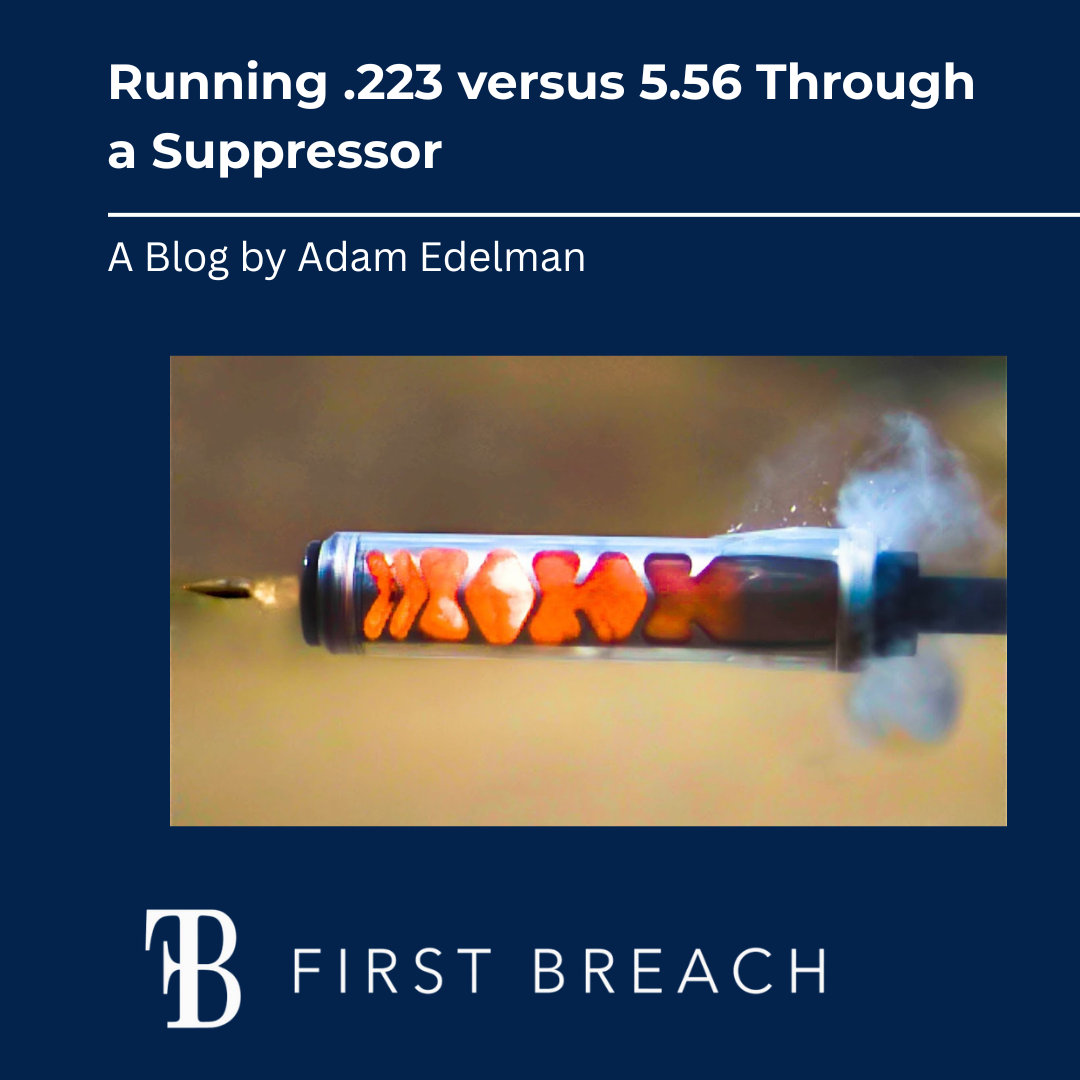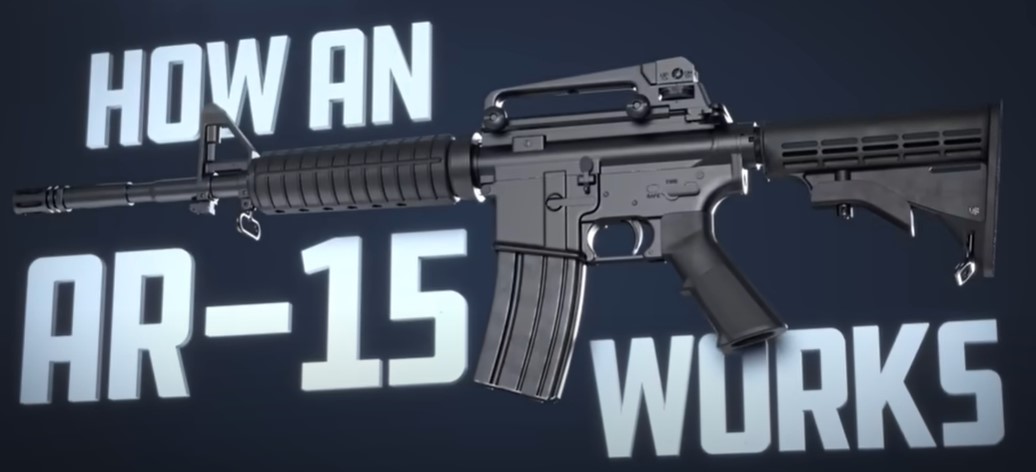Understanding Suppressor Performance: .223 vs. 5.56 Ammunition Insights
First Breach manufactures .223 Remington and 5.56 NATO 55gr ammunition and components from scratch at our factory in Hagerstown, Maryland. When using these rounds with a suppressor, there are several important factors to consider. Here’s a short comparison:
Pressure and Chambering:
5.56 NATO is loaded to higher chamber pressures—approximately 62,000 psi—compared to .223 Remington, which is around 55,000 psi. Firing 5.56 NATO in a .223 chamber can lead to overpressure issues, whereas firing .223 Remington in a 5.56 chamber is safe, albeit with lower velocity and pressure due to its design. Suppressors trap gas, increasing backpressure. As a result, using the hotter 5.56 NATO round can accelerate wear and increase gas blowback more than .223 Remington, although it also delivers higher velocity.
Sound Suppression:
Both .223 Remington 55gr and 5.56 NATO 55gr are supersonic rounds, which means they produce a ballistic crack beyond the suppressor. The actual difference in decibel levels between the two is minimal, so they will sound nearly identical when suppressed.
Suppressor Longevity and Gas Blowback:
The .223 Remington 55gr round runs cooler and at slightly lower pressures, making it gentler on the suppressor and reducing gas blowback. In contrast, the 5.56 NATO 55gr round offers greater velocity and energy but also generates more heat and fouling inside the suppressor.
If You Want the Quietest Setup:
Neither of these rounds is ideal for maximum suppression due to their supersonic nature. For quieter shooting, heavier subsonic .223/5.56 loads—typically in the 69–77gr range—are preferred. These rounds stay below the speed of sound, eliminating the ballistic crack and offering better suppression performance. These are often handloaded or specialty ammunition.
Summing It All Up:
Choose .223 Remington 55gr if your priority is reducing suppressor wear and minimizing gas blowback. Go for 5.56 NATO 55gr if you want maximum velocity and are willing to accept increased pressure, heat, and fouling. For optimal suppression, consider using heavier subsonic .223 loads instead of the standard 55gr supersonic rounds.











